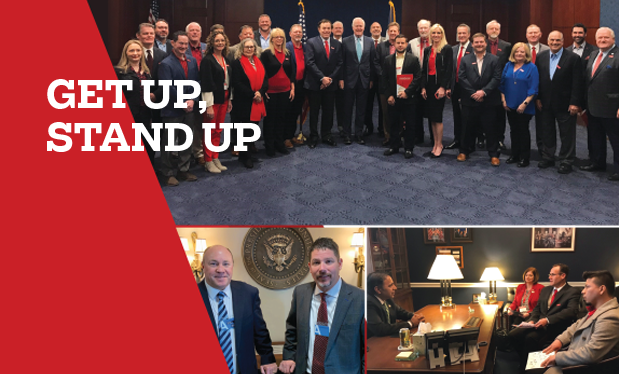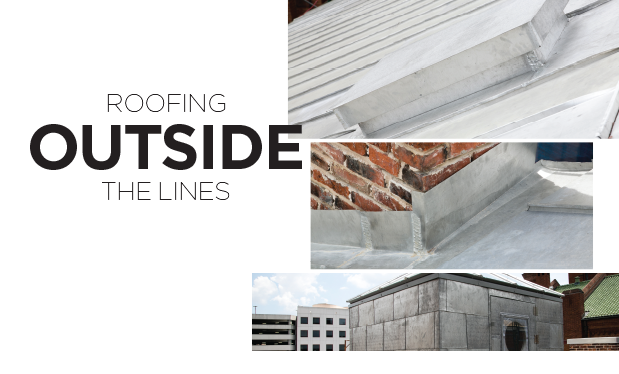In February, the National Roofing Legal Resource Center issued a bulletin proposing contract provision language addressing working with roof consultants and observers. The bulletin stresses the importance of properly notifying roofing contractors when observers will be engaged and timely communication between observers and roofing contractors.
NRLRC bulletin
When pricing and negotiating a contract, most roofing contractors want to know whether there will be a full- or part-time observer monitoring the project. The presence of an observer may affect the contractor's production (for example, the foreman will spend time interacting with the observer) and, therefore, price.
Also, once an observer is retained, the roofing contractor needs to be promptly advised of any alleged deficiencies or concerns the observer may have so the situation can immediately be addressed. The roofing contractor is entitled to receive the observer's daily reports as they are issued.
The NRLRC bulletin recommends specific contract provision language addressing proper notification and timely communication between the observer and roofing contractor.
NRCA members can access the bulletin and the suggested contract provision language from the NRLRC website, www.nrlrc.net.
IIBEC's RRO
The International Institute of Building Enclosure Consultants, formerly RCI Inc., has a Registered Roof Observer program that provides guidance for monitoring proper roof system installation and the issuance of daily reports documenting the monitoring. IIBEC's Manual of Practice provides specific recommended practices for quality assurance observation. Section 3.1.4-Reporting indicates: "Accurate and unbiased reporting to the project team is presented at intervals mutually agreed upon by the involved parties. Reports are filled out during each site visit ... ." The project team is described as the owner or owner's representative, project design authority, contractor and product manufacturer/supplier.
IIBEC's recommended quality assurance observation practice appears to be nonspecific on the timeliness and frequency of the observer issuing daily reports to project team members.
Additional information regarding IIBEC's RRO program and recommended practices is available at www.rci-online.org.
FM 1-52
FM Global's Loss Prevention Data Sheet 1-52, "Field Verification of Roof Wind Uplift Resistance," provides guidelines for visual construction observation as a recommended alternative to field uplift testing.
FM 1-52's Section 3.5 provides minimum guidelines for visual construction observation and indicates the visual construction observation's daily reports will be made available to FM Global, the owner, manufacturer and roofing contractor within 24 hours after each site visit.
FM 1-52 is accessible from www.fmglobaldatasheets.com.
ASTM D7186
ASTM D7186, "Standard Practice for Quality Assurance Observation of Roof Construction and Repair," provides consensus-based practice for quality assurance observation.
ASTM D7186's Section 10-Reporting Procedures/Schedule indicates the quality assurance observation shall provide written daily reports to the contractor upon the completion of the report but no later than the commencement of work on the following day.
ASTM D7186 is available for purchase by accessing ASTM International's website, www.astm.org.
NRCA's recommendations
NRCA has long maintained quality control and quality assurance are essential elements of roof system construction. Quality control is performed by the roofing contractor. Quality assurance is the responsibility of the building owner's representative (architect, engineer, roof consultant, etc.) or a representative of the roof system manufacturer.
NRCA also has long maintained the most effective means to evaluate the quality of a roof system installation is by thorough, continual visual examination and evaluation at the time of application by a person who understands good workmanship and the specific roof system type being installed. If deficiencies are suspected, they should be pointed out immediately to the roofing contractor so proper corrective action can be taken. The observer's written field report from the previous work day should be provided to the contractor no later than the start of the next work day.
Additional NRCA recommendations regarding quality control and quality assurance are provided in Quality Control Guidelines for the Application of Asphalt Shingle Roof Systems, Quality Control and Quality-assurance Guidelines for the Application of Membrane Roof Systems and Quality Control Guidelines for the Application of Spray Polyurethane Foam-based Roofing. These are available in the NRCA Bookstore at shop.nrca.net.
Mark S. Graham is NRCA's vice
president of technical services.
@MarkGrahamNRCA
This column is part of Research + Tech. Click here to read additional stories from this section.



